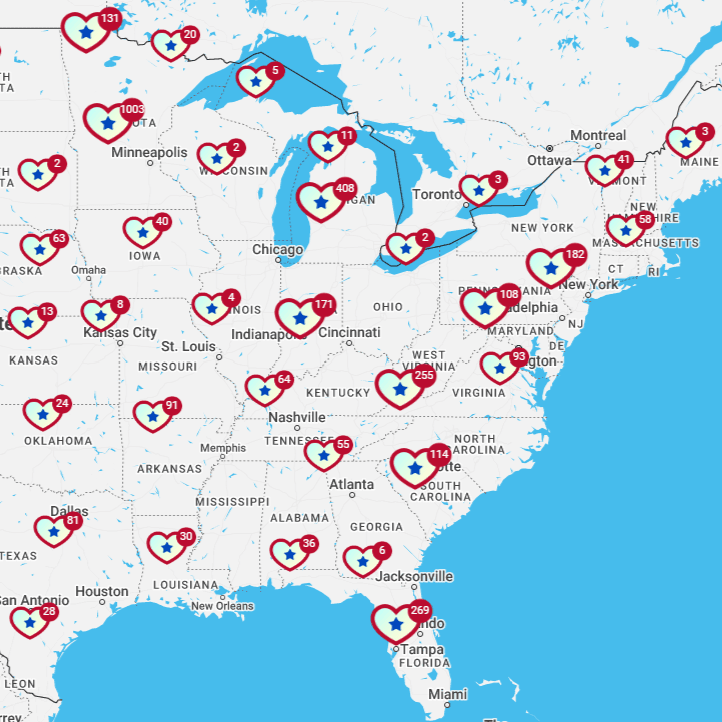
The Pros and Cons of Non-Partisan Ballots for Independents
Take a look at our representatives in action on the House or Senate floor, and you can see the need for an end to the partisanship that’s born of a broken two-party system. However, independent candidates are handicapped by the range of systemic barriers that keep them from being equally competitive, especially on the national stage.
In the absence of legislative and constitutional changes, such as eliminating the Electoral College and enacting campaign finance reforms, there are simpler, less disruptive ways to increase the electability of independents. One of these is to remove party affiliation from ballots.
The push towards non-partisan ballots is often seen as a way to level the playing field for independent candidates. By removing party affiliations, it’s hoped that voters will be empowered to make decisions based on the merits of each candidate's policies and values rather than their party label.
However, this well-intentioned approach could have some unintended consequences.
Join us as we explore how non-partisan ballots can inadvertently harm independents and suggest strategies to address these challenges.
The Theory Behind Non-Partisan Ballots
The concept of using non-partisan ballots is based on the belief that voters should evaluate candidates based on their individual qualifications, policy proposals, and character rather than their party alignment. It’s thought that, by removing the “D” or “R” from beside a candidate’s name, independents will receive equal consideration with Democrats and Republicans.
In theory, this practice benefits independent candidates who, without the backing of a major party, might struggle to gain recognition and support. Non-partisan ballots are also believed to reduce the influence of party loyalty in the voting process, potentially leading to a more diverse and representative group of elected officials.
However, in practice, non-partisan ballots present several challenges for independent candidates and the voters they aim to represent.
The Unintended Consequences of Non-Partisan Ballots
Voting is meant to be a simple process that can be finished in a short amount of time. Because of that, there’s no room on a ballot for candidate profiles, resumes, or lists of associations. All we really have to quantify each candidate’s suitability for office is what we learn about them in campaign ads, public appearances, and our own research prior to election day.
On partisan ballots, marking each candidate as a Democrat, Republican, or member of another political party serves as a short–hand for voters. In general, people know what a Democrat or Republican is supposed to stand for, and their feelings about party platforms and positions — their own and the opposition’s — often dictate their preferences in voting. Introducing non-partisan ballots takes away that well-known shorthand.
Lacking the familiar touchstone of party affiliation can lead to such unintended consequences as:
Voter Uncertainty
Without being able to use party affiliations as a gauge, voters may find it difficult to gather enough information about each candidate's policy positions and ideological leanings. This lack of information can be particularly problematic in down-ballot races, where candidates are less likely to have widespread name recognition or the resources to run extensive campaigns.
Voter Overload
Another way that non-partisan ballots can unintentionally hurt an independent candidate is voter overload. When faced with a long list of unfamiliar names without party cues, voters could experience decision fatigue and skip entire sections of the ballot altogether.
This is common in local elections, when there may be a dozen judges up for election or several candidates up for the same city council seat. When more than one seat needs to be filled, the number of potential candidates can increase exponentially.
Voter overload is a phenomenon that can disproportionately affect independent candidates, who rely on every possible vote to compete against better-known or better-funded opponents.
Candidate/Voter Misalignment
Without some sort of marker to denote a candidate’s ideological leanings, there can be cases of accidental misalignment. This happens when voters who are concerned about inadvertently supporting a candidate whose policies or values starkly oppose their own become overly cautious.
Imagine someone who ardently supports reproductive choice inadvertently voting in judges or a district attorney who is just as passionately pro-life, and you can see the concern.
Unfortunately, a cautious approach can translate into a default strategy of voters defaulting to candidates with whom they’re familiar. Too often, those default candidates are either incumbents or from major parties, which reinforces the status quo that non-partisan ballots aim to challenge.
Strategic Voting Dilemmas
In the absence of party labels, voters who might otherwise be inclined to support an independent candidate may instead choose a less preferred but more familiar candidate from a major party. This strategic voting, born out of fear of "wasting" their vote on a candidate perceived as less likely to win, further marginalizes independents.
By addressing the challenges presented by non-partisan ballots, we can move closer to a political system that truly serves the needs and aspirations of all voters, including those who value independence and innovation in their elected officials.
Potential Solutions
Addressing the challenges posed by non-partisan ballots requires a multifaceted approach that focuses on both increasing voter information and supporting independent candidates more effectively. This can be accomplished through:
Enhanced Voter Education: Efforts to provide voters with more comprehensive information about candidates' platforms, backgrounds, and policy positions are crucial. This could include voter guides distributed to all households, online databases with detailed candidate profiles, and community forums where candidates can present their views directly to voters.
Campaign Finance Reform: Leveling the financial playing field can help independent candidates compete more effectively. Public financing options, limits on campaign spending, and equal access to media coverage can reduce the advantages held by candidates from the major parties.
Ranked Choice Voting: Implementing ranked choice voting (RCV) can mitigate the fear of "wasting" votes on independent candidates. RCV allows voters to rank candidates by preference, ensuring that if their first choice doesn't win, their vote can still contribute to their next preferred candidate. This system encourages voting based on genuine preference rather than strategic considerations.
Civic Engagement Initiatives: Encouraging broader civic engagement and voter participation can increase the electorate's familiarity with a wider range of candidates. Educational campaigns that emphasize the importance of voting in all races, not just high-profile ones, can help combat voter overload and apathy.
Transparency and Accountability Measures: Measures that require candidates to disclose their policy positions, campaign financing sources, and potential conflicts of interest can help voters make informed decisions. This transparency is especially important in non-partisan elections, where party labels do not provide shorthand insights into candidates' ideologies.
By implementing a combination of enhanced voter education, campaign finance reform, and other supportive measures, it's possible to mitigate the unintended consequences of non-partisan ballots.
Final Thoughts
While non-partisan ballots aim to foster a political environment where candidates are judged on their own merits rather than their party affiliation, the reality is often more complex. Challenges faced by independent candidates and the voters who might support them highlight the need for comprehensive reforms that address information gaps, campaign finance disparities, and voting systems that discourage strategic voting.
These efforts can create a more equitable and representative political landscape, one where independent candidates have a fairer chance of success and voters can confidently support the candidates who best align with their values and policy priorities.
Want to get involved in making Independent candidates a more viable and competitive option? Join the GoodParty.org Community and connect with candidates across the United States who support electoral reform and innovation.
